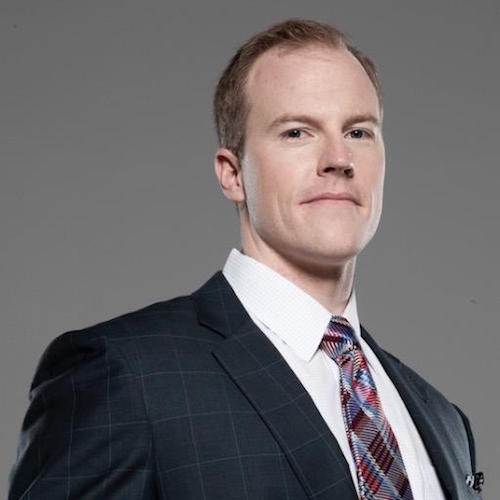Shortly after an earthquake devastated Haiti in January 2010, I was part of a team that traveled to that country in hopes of providing much-needed aid. As we drove through Port-au-Prince one pitch-black night, we suddenly stopped dead in our tracks, as the headlights of our vehicle played across the boulders that had been lined up across the road ahead.
Was this some kind of ambush? Were we about to be robbed, or worse?
We scrambled to find an alternate route to the orphanage supported by Live Different, a charitable organization operated by my friend, Vaden Earle. But while doing so we came upon more boulders.
And a group of men brandishing machetes.
It took no small amount of diplomacy on the part of our interpreter to calm everyone down, and ascertain the macabre nature of the problem: With such a tragically high loss of life, people from the surrounding area had been driving into this neighborhood and dumping bodies. The local residents, worried about the potential spread of disease, believed that if the boulders didn’t put a stop to that, the machetes surely would.
Our group initially spent 48 hours in Haiti, distributing supplies and digging through the rubble in an attempt to rescue those buried beneath collapsed buildings. It was heart-wrenching and, for me, life-changing. It made me appreciate what I have, and how much I have to offer — indeed, how much so many of us have to offer.
And must offer.
Face-to-face philanthropy is that way, making nearly as much of an impact on those offering help as those in need. Unlike an online or snail-mail donation to some worthy cause — maybe you see its impact, maybe you don’t; maybe you think about it again, maybe you don’t — the issue is right in front of you, hitting you in the face, leaving an indelible impression (and one not unlike what we experienced that night in Port-au-Prince).
Author/leadership keynote speaker Simon Sinek has often written and discussed the way in which certain people, companies and products appeal to others on a gut level — though in reality that connection is via the brain’s limbic region, which is responsible for feelings like trust and loyalty.
It was that way with any face-to-face contact, where our team developed a deep connection with the people — a connection that increased the desire to donate even more, in terms of finances and time, towards Live Different’s causes. This is no surprise, as two of the most powerful forces driving donors are the level of appreciation experienced and significance of the meaning for that donation. If these two drivers can be achieved in an elevated way, a charitable organization’s fundraising efforts can dramatically improve.
What better way to show what your organization is all about than through the sort of interactions we had in Haiti? We saw such devastation … and felt such gratitude. We developed a keen understanding of the enormity of the problem, and the complexity of the solution.
Haiti was hit by the magnitude 7.0 quake on Jan. 12, 2010. That, as well as the accompanying aftershocks, flattened one building after another — often because they were constructed without proper reinforcement (which is unaffordable to most). Hundreds of thousands died. Millions were left homeless. A humanitarian crisis ensued, and continued for years afterward.
Confronted by that, one couldn’t help but be moved. Every hour brought new heartache — not the least of which was the discovery by our interpreter that several of his family members had died when their home collapsed. Every night found me in our rudimentary shelter, pen in hand, detailing each experience in my notebook.
The faces were the thing. There was so much tension in each of them, so much loss, that it was impossible not to want to help. It was not a choice, not a maybe, not an if – there was simply a feeling that something had to be done, because such suffering was just not acceptable. A human being could not see that and feel OK about it, and not want to do everything he or she could possibly do to change it.
The direct approach lies at the very foundation of Live Different, which Vaden founded in 2000. First designed to do good work in Canada, it became an international organization in 2005. Among other things we dispatch groups of teenagers on mission trips to not only Haiti but Mexico and the Dominican Republic.
Interesting thing here: Before making such trips, some teens have experienced feelings of worthlessness, and wondered about the meaning of life. (Not coincidentally the second-leading cause of death among Canadian teens is suicide.)
Then they have traveled to these countries, and seen people who smile and laugh heartily despite having very little in comparison to those in developed nations. And the teens have helped build a house, clinic or school, and seen the appreciation in the locals’ faces.
On one particularly notably occasion, the teens made the acquaintance of people who earned pennies by picking through the trash at a dump. That they were shoeless as they did so had a particular impact on the group: Why, they wondered, should I have shoes while they have none? They would as a result surrender theirs on the spot.
The upshot when these young people returned home was twofold. First, they were far more grateful for everything they have. Second, they came to the realization that yes, they could make a difference in someone else’s life, and the world at large.
And those feelings of worthlessness? Gone.
It is that way for others as well. There is no better feeling than helping another and feeling truly appreciated. The connection is immediate and enduring — and it provides people with greater value and satisfaction for having supported a cause.


